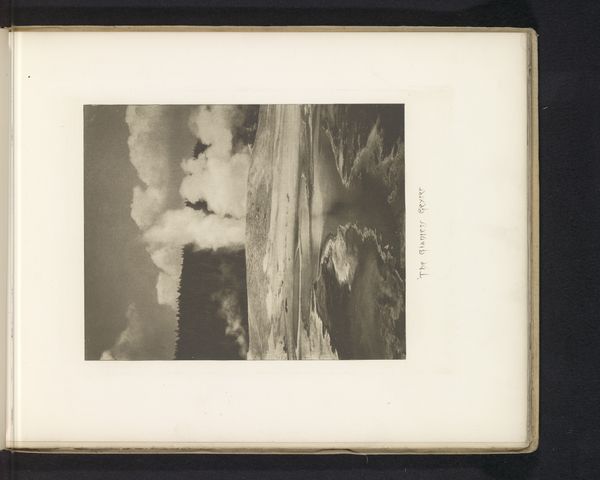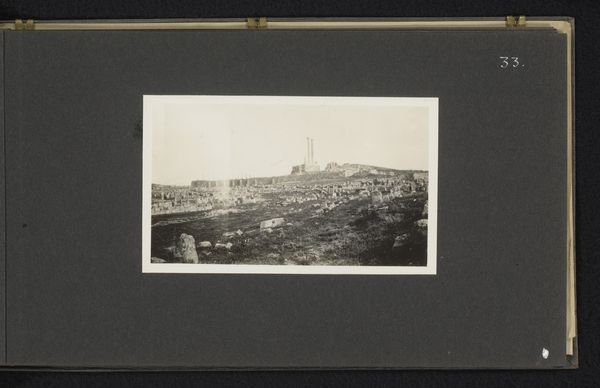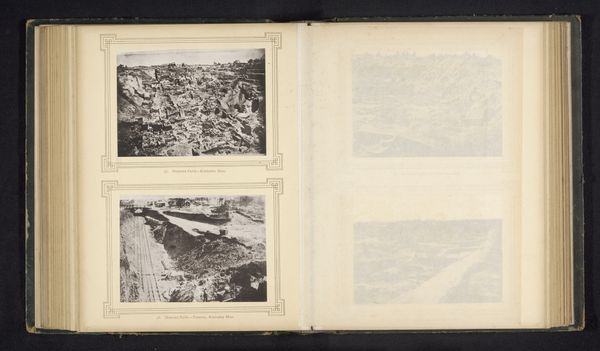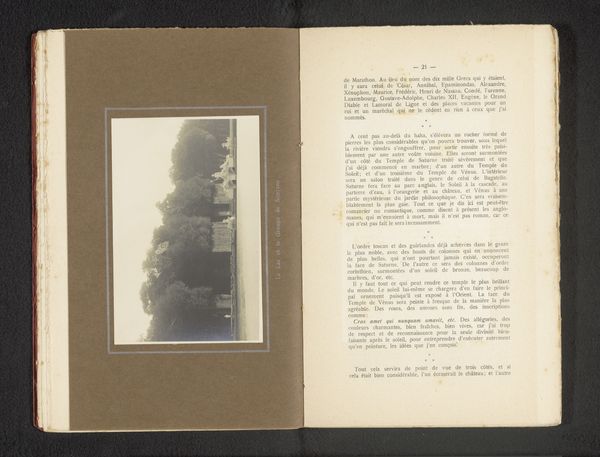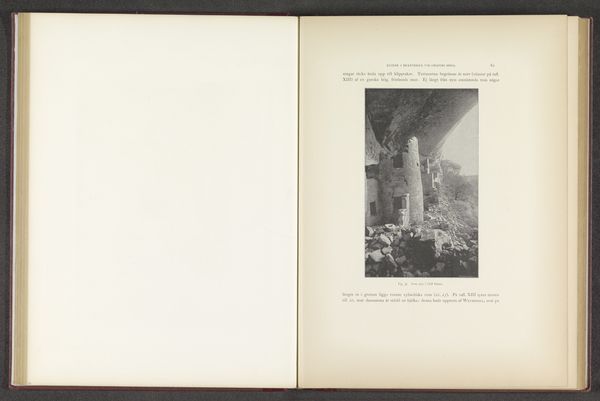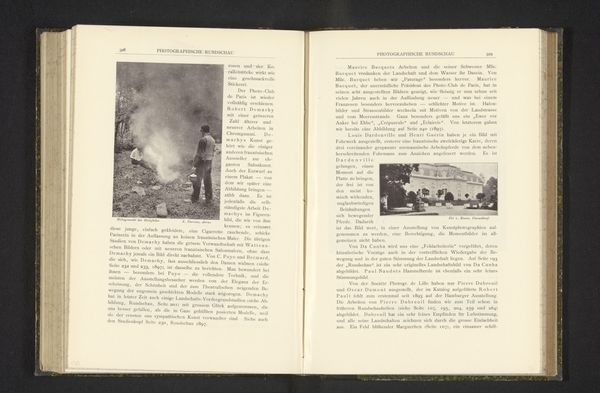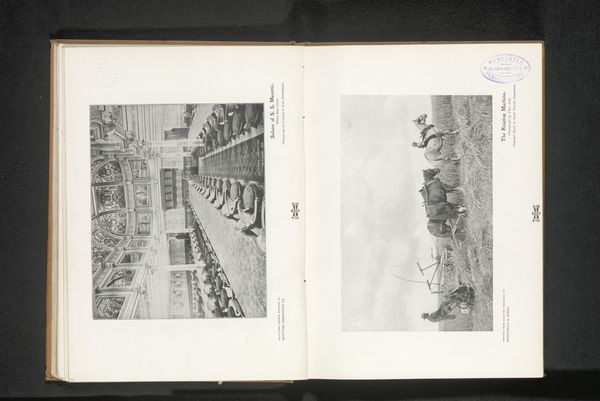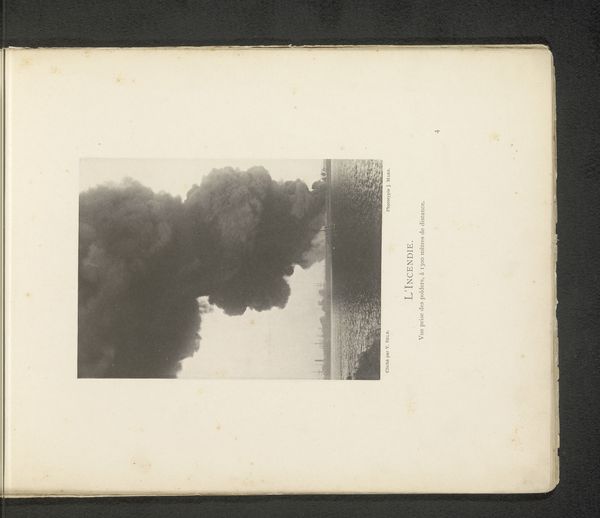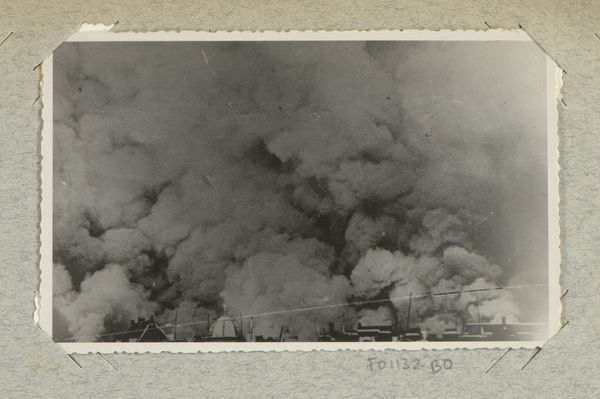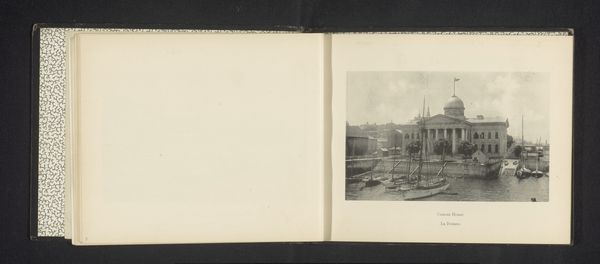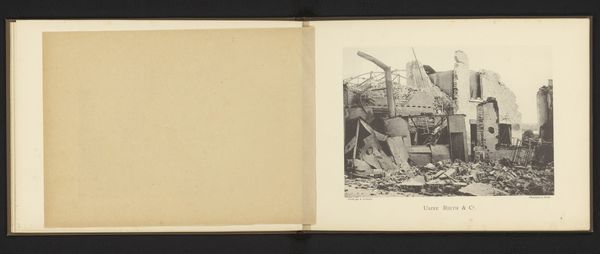
print, photography
# print
#
landscape
#
photography
#
photojournalism
#
cityscape
Dimensions: height 124 mm, width 102 mm, height 237 mm, width 303 mm
Copyright: Rijks Museum: Open Domain
Curator: This photo album contains images of a scene titled "Rotterdam in Brand," and based on historical records, it's believed to capture the aftermath of the bombing of Rotterdam between 1940 and 1945. What's your first impression? Editor: It's visually overwhelming. The plumes of smoke dominate, like malevolent giants consuming the cityscape. I notice the album page itself is almost untouched, such a stark contrast. It enhances the devastating mood of it all, doesn’t it? Curator: Absolutely. And, if you look closer, it’s not just an abstract visual. This represents trauma. Photojournalism plays a huge role in archiving history; we cannot remove images from our contemporary cultural awareness. It invites crucial dialogues about the cost of war and those deeply impacted. Editor: You're right; the smoke almost becomes a character. Smoke often signifies transition or destruction. Given the context, this is clearly not a purifying force but a force of devastation, almost erasing architectural icons. In many spiritual systems fire is a purifier, but here it clearly represents chaos. Curator: Thinking about that chaos, Rotterdam’s identity was intentionally attacked and altered forever. We have to examine why this site became a focal point of destruction, how those decisions reflect broader power dynamics in wartime. Consider the implications. How it might perpetuate nationalism? How we interpret it today with the current state of affairs… Editor: I'm also struck by the size of these images. These photo prints were part of someone's personal collection or record, which suggests an intimacy despite the enormous scale of the tragedy it portrays. What stories do these images want to reveal to us? What narratives must not be ignored? Curator: Exactly. Images like this serve as anchors to historical truths. Looking at the social dimensions and human elements offers deeper insights into this photojournalistic expression. Editor: Indeed, symbols can sometimes simplify complexity, but these photographs demand that we unpack that complexity and really reflect on the trauma of historical conflicts. Curator: Perhaps, too, considering who might have taken this photograph is important. What privileges, and perspectives did this person bring when archiving these tragic events? Editor: A final somber but crucial meditation. We need to consider a variety of perspectives, even within the realm of historical remembrance.
Comments
No comments
Be the first to comment and join the conversation on the ultimate creative platform.
